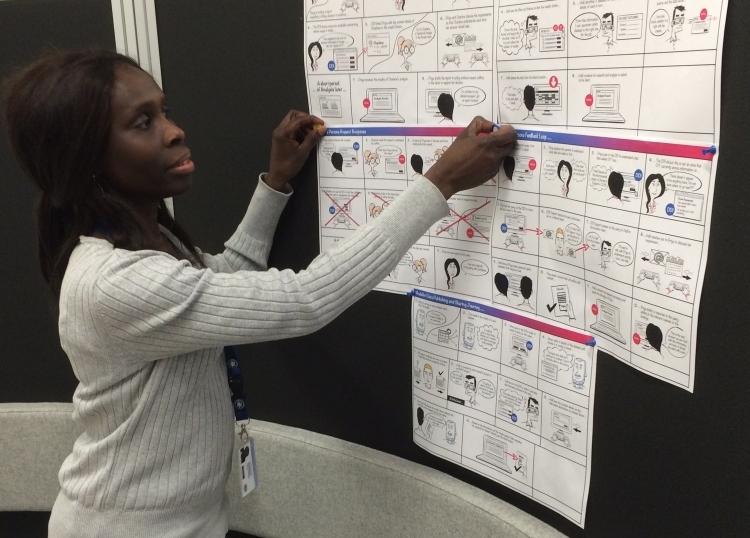 A year ago, I joined the Crossing Thresholds programme, which is for women who want to develop their career in a structured and supportive environment. At the time, I wasn’t sure where it would lead or what thresholds I’d cross. But I had read several articles on how technology and digital methodologies are changing the world and thought this would be a worthwhile development path to tread. That was the beginning of my mission to get a placement in an Agile environment.
A year ago, I joined the Crossing Thresholds programme, which is for women who want to develop their career in a structured and supportive environment. At the time, I wasn’t sure where it would lead or what thresholds I’d cross. But I had read several articles on how technology and digital methodologies are changing the world and thought this would be a worthwhile development path to tread. That was the beginning of my mission to get a placement in an Agile environment.
In keeping with the Women’s International Day theme, ‘Be Bold for Change’, I approached DfT’s Digital Data Index (DDI) team and asked if I could join them for a month. The DDI project, which this blog has covered before, is showcasing Agile working in DfT. The team works in an open space and encourages colleagues to come and have a look, so it seemed like an ideal opportunity.
When I arrived I was taken aback by the bright, energetic workspace but I quickly got to like it. For the duration of my placement, I swapped my usual hotdesk for a buzzing and colourful area, with all the tools of Agile working - Post-it notes, customer story map posters and user journey storyboards. Rather than weekly team meetings, we had daily standup sessions, limited to 15 minutes. There was even a planned speaking order to facilitate communication, which was useful especially when members of the project team were attending remotely. Standups aren’t for the manager to hold people to account, they’re about the team sharing what they are doing, identifying any blockers and finding ways to address them.

It’s all about the users
The constant theme in Agile working is users, not the producers – user needs, not business needs. This means you have to find and interview the people who’ll be using your product to fully understand what is required. For the DDI project, that means anyone who needs to find datasets or data experts. I met some of the users and observed the user research sessions being carried out. As DDI was in the Alpha stage, this involved testing a prototype and providing feedback on it.
What have I taken with me?
The experience of working in a small supportive team was valuable in several ways. I wasn’t involved in the whole project from beginning (Discovery) to end (Live). But being there for a part of it gave me a great insight into the benefits of Agile. If you understand your users and keep going back to them for feedback, there’s a much greater chance of you delivering something of value to them. Not only that, shadowing the DDI project greatly increased my understanding of how different business areas in DfT find and use data. The needs of statisticians aren’t the same as those of policy colleagues, for example.
I’m now familiar with retrospectives – quick standup meetings looking back on the previous sprint. The team members reflect on what has gone well and suggest what opportunities there are to improve behaviours, processes or working practices.
Lastly, I discovered a great organisational tool, Trello. I would recommend Trello if, like me, you need to get organised! Quick, simple and easy to use.
You don’t necessarily have to take a course to work in an Agile environment and I never thought of doing so before. But I would now, as I’m a convert!